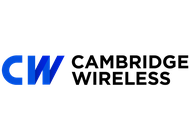Demystifying the connected world
Technology
- Date 2 Sep 2014
- Sectors Technology, Life Sciences
The trend of creating connected devices is affecting nearly every industry – from a pharmaceutical company that wants a wireless inhaler to measure patient compliance; to a sporting goods manufacturer wanting to offer performance and technique tracking; or a lighting and heating controls company aiming to enable smart homes and offices.
The guide is aimed at companies that are new to creating connected products – identifying the potential pitfalls awaiting the unwary and helping them avoid making costly mistakes.
Take batteries, for example – each battery only contains a certain amount of energy from each charge, so deciding how to use it is key. Will your customers be willing to charge their device every day or do you need a single coin cell battery to last a month or two? Or longer? Your power ‘budget’ will be affected by a whole host of things. Simply changing the frequency of a blinking LED, for example, can double battery life.
Antennas are easy to overlook – but hard to get right if you want to push the performance of a device. Off-the-shelf antennas will typically involve a compromise between performance and the size of your product. Custom antennas will be more expensive and time consuming to develop but usually result in a better device. The key is to decide the relative importance of size and performance, and what your customers will accept.
The right algorithm can also make the difference between success and failure. If you simply want your device to measure temperature, a simple sensor will do and no analysis is required. But if you want to determine how high you’ve jumped, you’ll need to apply an algorithm to the data coming from your sensors to calculate the answer. For medical devices, the algorithm is often the critical element that yields the diagnostic result.
“We work with a wide variety of clients who want to understand how they can ‘get connected’ and make the most of the trend of the Internet of Things for their business,” said Rob Milner, head of smart systems technology at Cambridge Consultants. “The one thing they all have in common is a desire to provide customers with a differentiated, more intuitive user experience.
“A connected system is a way of increasing a consumer’s engagement with a brand and providing additional benefits – either through the device itself or through new services enabled by the data collected via the connected product. This can give significant competitive edge in a crowded marketplace.
“We created this guide to help companies understand the 10 most important things for creating a successful connected device system that will add value to their products and open up new revenue streams. It’s been written off the back of our successful product developments for clients around the world, which sometimes involves picking up the pieces of earlier failed attempts by others. We hope this report helps companies avoid the most common – and costly – mistakes.”
To help clients rapidly bring to life their ideas for connected devices – often referred to as ‘appcessories’ – Cambridge Consultants has launched an interactive workshop, complete with its own ‘Appcessory Toolkit’. In just one day a team of experts, tailor-made for each project, captures the key requirements of a client’s new product and demonstrates the impact of different design decisions – highlighting the complex trade-offs between size, power, cost and performance. The client leaves at the end of the day with a physical model of their product idea – as well as an understanding of its performance and the best way to develop it.

